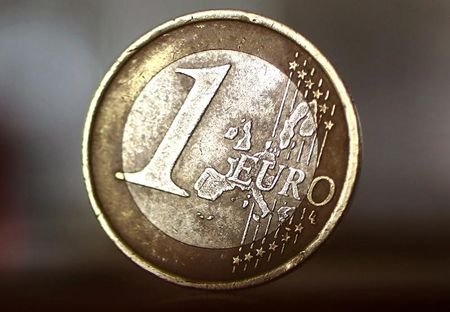Forex
Dollar steady ahead of Powell Mark II; euro looks to French politics

Investing.com – The U.S. dollar stabilized in early European trade Wednesday, remaining near a three-week low, after the first day of Fed Chair Jerome Powell’s two-day testimony on Capitol Hill, while the euro steadied amid political uncertainty.
At 05:25 ET (09:25 GMT), the Dollar Index, which tracks the greenback against a basket of six other currencies, edged marginally lower to 104.770, just above Monday’s near one-month low of 104.622.
Dollar awaits Powell part two
The dollar traded in a tight range Wednesday in the wake of Powell’s initial testimony before Congress, with the Fed chair flagging the recent labor market cooling as an increasingly important factor in deciding when the U.S. central bank will start cutting interest rates.
Powell also said a rate cut is not appropriate until the Fed gains “greater confidence” that inflation is headed toward the 2% target.
But in mentioning that elevated inflation was not the only risk the central bank faced, the Fed chief could be seen as preparing the ground for a September interest rate cut.
returns to Washington later Wednesday, and traders will be looking for more refinement in his comments ahead of Thursday’s vital consumer inflation data.
“Powell’s prepared remarks focused on two-way risks, reiterating the need for more data input to justify monetary easing,” said analysts at ING, in a note. “So, more of the same rhetoric, and we believe Powell is happy with keeping markets relatively quiet at this stage as some data starts to go in the right direction.”
French political gridlock
rose 0.1% to 1.0819, remaining below Monday’s near one-month high of 1.0845 in the wake of the second round of the French parliamentary elections.
The poll resulted in a shock election win for the country’s leftist alliance, after the far right National Rally had triumphed in the first round, meaning the country now faces the possibility of a hung parliament.
“It has become increasingly clear that coalition talks in France will prove a lengthy and complicated process,” said ING. “Markets would probably choose the technocratic solutions over the others, but it may well take weeks to break the gridlock, and we remain concerned about the bond market getting unnerved by such immobility.”
traded 0.1% higher at 1.2801, not far off Monday’s 1.2845, its strongest since June 12, in the wake of Thursday’s general election.
Yen weakens after Japanese inflation
In Asia, traded 0.2% higher to 161.56, coming back in sight of recent 38-year highs.
Japanese producer price index inflation data showed that while factory inflation picked up in June, it still remained relatively weak, furthering doubts over whether the Bank of Japan will have enough impetus to keep tightening policy.
traded 0.1% higher to 7.2760, with the yuan weakening after inflation shrank in June, reflecting little confidence to spend among consumers.
The country’s inflation improved, shrinking at its slowest pace since February 2023, but still showed that Chinese disinflation remained in play.
fell 0.8% to 0.6072 after the kept rates steady and flagged progress in bringing inflation back to its 1% to 3% annual range. The central bank also said that it could loosen policy on further easing in inflation.

 Forex3 years ago
Forex3 years agoForex Today: the dollar is gaining strength amid gloomy sentiment at the start of the Fed’s week

 Forex3 years ago
Forex3 years agoUnbiased review of Pocket Option broker

 Forex3 years ago
Forex3 years agoDollar to pound sterling exchange rate today: Pound plummeted to its lowest since 1985

 Forex3 years ago
Forex3 years agoHow is the Australian dollar doing today?

 Cryptocurrency3 years ago
Cryptocurrency3 years agoWhat happened in the crypto market – current events today

 World3 years ago
World3 years agoWhy are modern video games an art form?

 Commodities3 years ago
Commodities3 years agoCopper continues to fall in price on expectations of lower demand in China

 Economy3 years ago
Economy3 years agoCrude oil tankers double in price due to EU anti-Russian sanctions





















